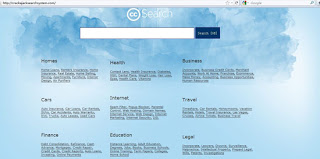Hijacked by Marveloussearchsystem.com virus?
Marveloussearchsystem.com is nasty browser hijacker which was associated with MBR virus. This Marveloussearchsystem.com is finishing site for the development of several sets of different styles of page templates, and then binds multiple domain names. Marveloussearchsystem.com is deceptive and aims to lure you to purchase its full version by some fake security reports.
Marveloussearchsystem.com malware is using search engines on the importance of the relationship, focusing on establishing external links and search engines to carry out a series of deceptive behavior. Marveloussearchsystem.com promotes Ads on it site. If your computer was attacked by this virus, then your browser settings have been changed, then every time you search online, you are redirected to Marveloussearchsystem.com. It is really annoying with the spam. Please do not trust it instead of removing Marveloussearchsystem.com immediately.
When hijacked by Marveloussearchsystem.com virus, you can’t do anything just go to the malicious link. Since Marveloussearchsystem.com may block antivirus and antispyware programs that you will need to remove it manually. If you find that your computer is infected with Marveloussearchsystem.com virus, please follow the manual removal instructions below to remove Marveloussearchsystem.com from your computer.
Marveloussearchsystem.com Screenshot

Marveloussearchsystem.com Manual Removal Instructions
Step1: To stop all Marveloussearchsystem.com processes, press CTRL+ALT+DELETE to open the Windows Task Manager. Click on the "Processes" tab, search for the virus, then right-click it and select "End Process" key.
%Windows%\system32\[random].exe
%Documents and Settings%\[UserName]\Application Data\[random]\
%Documents and Settings%\[UserName]\Application Data\[random]\
Step2: Remove the Marveloussearchsystem.com virus from registry editor. Click "Start" button and selecting "Run." Type "regedit" into the box and click "OK." Once the Registry Editor is open, search for the registry key "HKEY_LOCAL_MACHINE\Software\Random." Right-click this registry key and select "Delete."
HKEY_LOCAL_MACHINE\SOFTWARE\Microsoft\Windows\CurrentVersion\Run “[random].exe”
HKEY_LOCAL_MACHINE\SOFTWARE\Microsoft\Windows NT\CurrentVersion\Winlogon\”Shell” = “[random].exe”
Marveloussearchsystem.com hijacker was embedded with dll files, consider the incidence of malware infection. Or you hesitate to remove yourself for in case due to mistakes damaging your system. I suggest you remove Marveloussearchsystem.com Virus completely with PC experts who can assist you very fast.
